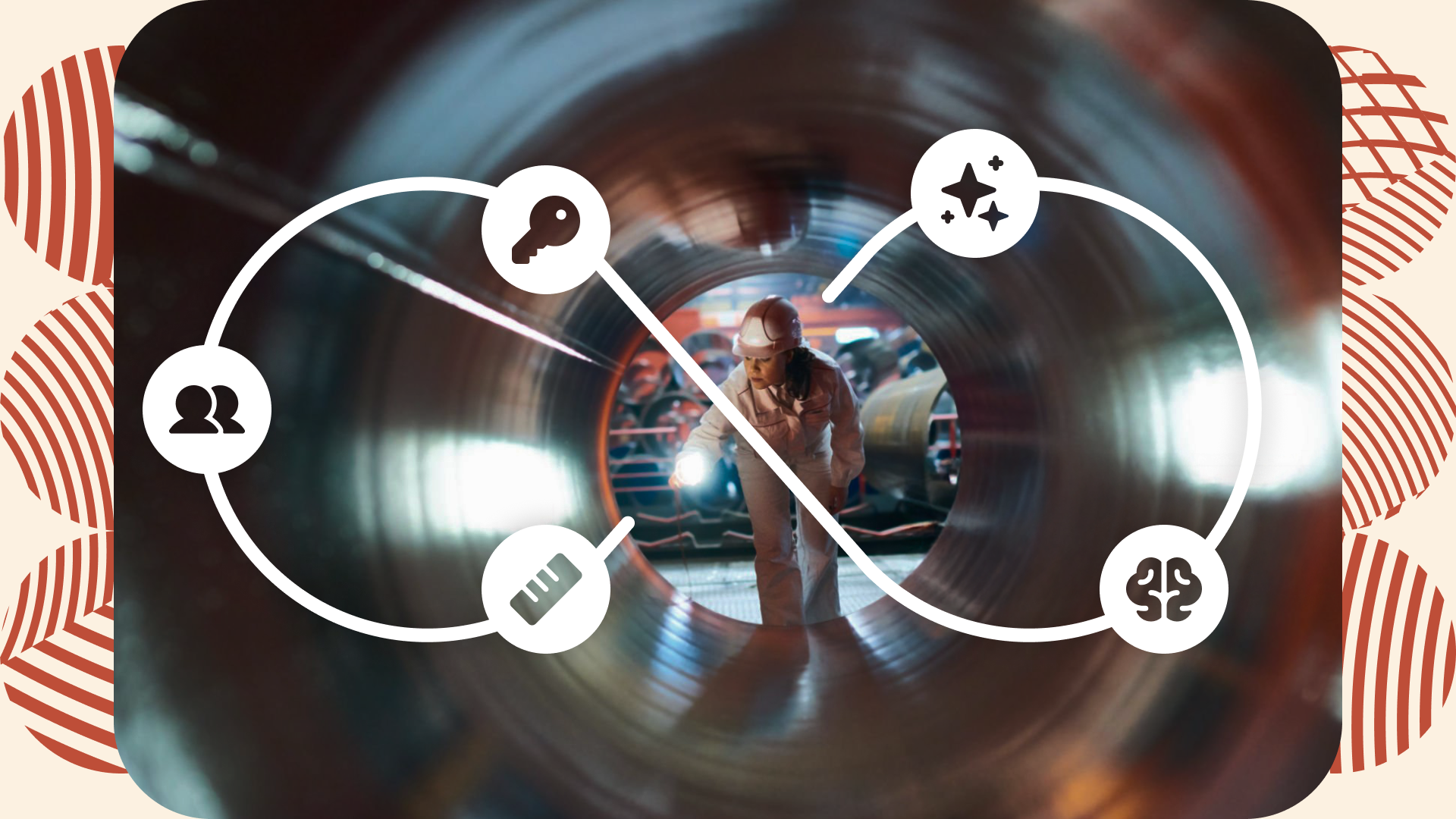29th October 2025
Five strategies for embedding a culture of continuous learning
Vallourec’s Global Talent Director reveals how continuous learning can build resilience in a volatile global market.
29th October 2025
Vallourec’s Global Talent Director reveals how continuous learning can build resilience in a volatile global market.

With operations spanning more than 20 countries, seamless tubes manufacturing company Vallourec exemplifies the complexity of global talent management. Over 80% of employees are non-native English speakers, collaborating across Europe, North and South America, the Middle East, Asia and Africa.
In an interview for our latest report, Véronique Junqua-Salanne, Global Talent Director at Vallourec, emphasizes the importance of building a culture of continuous learning, and shares practical tips for HR leaders to achieve this.
“Curiosity and the ability to keep learning are essential. There is a high chance that what we learned at school or university will no longer be valid five years from now. The world is changing fast, and we need to adjust continuously to deliver value for our business.”
With English as Vallourec’s operating language, any gaps in vocabulary or comprehension can lead to misunderstandings and mistakes. To address this, Vallourec has reframed how language skills are viewed, to position them as a foundational tool. As Véronique explains:
“English is your working tool to communicate with your colleagues. It is as critical as your computer, your phone, or maybe your car. Without it, you will not perform in your role.”
Language capability is now built into development systems. In annual career interviews, employees self-assess their English and mobility aspirations. Those with the greatest need are prioritized for training, with managers expected to enable employees to learn during working hours.
By embedding language as the company’s communication infrastructure, Vallourec reduces the hidden costs of miscommunication while opening mobility pathways and strengthening its internal talent pool.
While AI is often framed as a disruptor, Véronique sees its potential to transform how people learn at scale. Vallourec’s language training program now includes AI-powered roleplays that provide speaking practice for learners in a pressure-free environment.
“I really think AI can help improve proficiency by removing that initial barrier. Especially when you start from lower levels, you don’t have the confidence, you don’t have the words, you don’t know how to say things. AI is a non-judgmental tool that can help develop confidence by practicing.”
This, she argues, is as much a psychological breakthrough as a technological one. By reducing the emotional barriers that hold learners back, AI can hone speaking skills to improve participation in meetings and collaboration across borders.
Beyond language, AI-driven simulations also hold potential in other domains, from sales conversations to performance feedback, enabling managers to rehearse difficult interactions in a safe environment.
As generative AI reshapes industries, many organizations assume that strengthening technical capabilities will best prepare employees for the future. However, recent research provides a counter perspective. A Harvard Business Review analysis of 70 million job transitions found that workers with a broad base of foundational skills, such as collaboration, adaptability, and problem-solving, not only acquired new technical expertise more quickly, but also advanced further in their careers and demonstrated greater resilience to market disruption.
To enable strong collaboration and team alignment across borders, behavioral skills, including language and cultural intelligence, are a key part of Vallourec’s learning strategy. As Véronique explains,
“You do not give feedback to someone from Asia in the same way you would to someone from the U.S. or Brazil. Without that awareness, even perfect English will not ensure your message is heard.”
Vallourec recently piloted a cultural intelligence initiative between French and Brazilian teams, to bridge cultural differences that partially hindered collaboration. A facilitated workshop and the joint signing of a work charter rebuilt trust and communication, delivering measurable improvements in cooperation. For Vallourec’s leadership, the pilot provided tangible evidence that investments in foundational behavioral skills directly strengthen performance and organizational agility.
Formal training is vital, but Véronique stresses that some of the most powerful learning happens informally. Peer coaching, mentoring by senior professionals, and project reflection all play a role in embedding learning into the fabric of the business.
“I’m convinced the best and most profitable learning experience comes from the ground, from the exchange with peers and from the feedback you receive. It’s the mix of formal training, with adjusted modalities, agile learning opportunities in the digital field (short Interactive formats), learning from the experience of others, and feedback you receive from your manager, your peers or your team members, that makes learning much more powerful.”
To keep engagement high, modalities are also evolving. Long, static courses rarely hold attention; employees expect shorter, interactive, and immersive formats. For Vallourec, this includes combining device-agnostic digital content with peer-driven opportunities, to embed learning into daily routines.
For Véronique, Net Promoter Scores (NPS) and course completions do not go far enough in measuring impact. As she explains, “A high NPS only says someone enjoyed the course and would recommend it. It says nothing about the quality.”
Instead, Vallourec focuses on achieving observable changes in behavior. They require the training provider or designer to outline the skills that each module will build, so that these can be evaluated in practice by the employee’s managers and colleagues following the course.
For language training, progress is tracked objectively against the Common European Framework of Reference (CEFR), where employees are expected to move up at least one proficiency level. The CEFR’s can-do statements, such as “this person can now participate in international meetings” or “they can now write business reports in English,” link outcomes directly to business value.
For Véronique, building a culture of learning requires strategy and transparency. Leadership commitment is essential, as is clarity on whether initiatives such as language training are positioned as a broad employee benefit or as a targeted investment in selected talent.
“Be clear about what you want to achieve. Do you consider English as a benefit for your employees, or as an investment in them?”
At the same time, continuous learning is less about programs than about mindset. In a volatile world shaped by AI, automation, geopolitics, and shifting generational expectations, curiosity and agility are what enable organizations to adapt. Her final message to HR leaders is simple: “be curious”.

Insights from global HR and L&D leaders
Véronique’s perspective is one of many featured in our new report, The Strategic Role of Language Training Across Industries. Drawing on interviews with senior HR and L&D leaders worldwide, the report explores how organizations are using language training to close skills gaps, build talent pipelines, and drive long-term value.
Read and download the full report here.